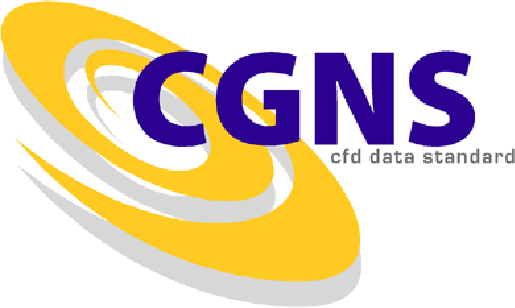 (CGNS Documentation Home Page)
(Steering Committee Charter)
(Overview and Entry-Level Document)
(A User's Guide to CGNS)
(Mid-Level Library)
(Standard Interface Data Structures)
(SIDS File Mapping Manual)
(CGIO User's Guide)
(Parallel CGNS User's Guide)
(ADF Implementation)
(HDF5 Implementation)
(Python Implementation)
(CGNS Tools and Utilities)
(CGNS Documentation Home Page)
(Steering Committee Charter)
(Overview and Entry-Level Document)
(A User's Guide to CGNS)
(Mid-Level Library)
(Standard Interface Data Structures)
(SIDS File Mapping Manual)
(CGIO User's Guide)
(Parallel CGNS User's Guide)
(ADF Implementation)
(HDF5 Implementation)
(Python Implementation)
(CGNS Tools and Utilities)
(Tools)
(CGNSview)
(CGNSplot)
(Utilities)

|
| CFD General Notation System
CGNS Tools and Utilities
|
Version 4.2
A variety of CGNS-related utility packages have been developed, both by
CGNS team members and by CGNS users.
- Tools
- A number of utility programs are provided in the tools
subdirectory for the CGNS library release. These include:
- cgnscheck, a CGNS file validator
- cgnscompress, compress (remove extra space) from a CGNS file.
- cgnsdiff, compare 2 CGNS files.
- cgnslist, list the contents of a CGNS file.
- cgnsnames, display all the standard data-name identifiers.
- cgnsupdate, script to update a CGNS file to the current version.
- cgnsconvert, convert a CGNS file to/from ADF/HDF5 format.
- adf2hdf, script to convert a CGNS file from ADF to HDF5.
- hdf2adf, script to convert a CGNS file from HDF5 to ADF.
- CGNSview
- A CGNS file viewer and editor based on Tcl/Tk. This is a replacement
for ADFviewer, and is now based on the cgio interface which allows
for reading both ADF and HDF5 based CGNS files.
The GUI allows access to any node in the file using a
Windows-like collapsible node tree.
Nodes and data may be added, deleted, and modified.
Several other utilities may be accessed from CGNSview,
including:
- CGNSplot, for displaying
the surface mesh, element sets, connectivity regions, and
boundary condition regions
- CGNScalc, a calculator using data in CGNS files
- cgnscheck, a CGNS file validator
- cgnsdiff, compare CGNS file with another.
- Import,
export,
data conversion, and
subset extraction and
interpolation utilities
CGNSview is part of the CGNStools package.
- CGNSplot
- For structured zones, CGNSplot may be used to display
the exterior faces of the volume mesh, the minimum and maximum
bounding surfaces, the connectivity regions, and the boundary
condition regions.
For unstructured zones, CGNSplot will display the
element sets.
It may be run stand-alone, or accessed from
CGNSview.
CGNSplot is part of the CGNStools package.
- Utilities
- A collection of import, export, data conversion, and subset
extraction and interpolation utilities that may be run
stand-alone, or accessed from
CGNSview.
These utilities are included in the CGNStools package.
- ADF_Edit
- A browser/editor that displays the ADF tree structure and
contents in ASCII form, and permits item-by-item editing.
Although ADF_Edit is still available,
it has been superseded by the much more capable
CGNSview.
- CGNS_readhist
- Reads a CGNS file and writes history data to a formatted file.
CGNS_readhist is available from the
Utilities page at the
CGNS web site
 .
.
Contact: Chris Rumsey (c.l.rumsey@larc.nasa.gov)
- FTU (File Transfer Utility)
- Converts CGNS files to and from Plot3D format.
Has a text-based menu allowing the manipulation of a CGNS base.
FTU is available from the
Utilities page at the
CGNS web site
 .
.
Contact: Bob Bush (bushrh@pweh.com)
- PyCGNS

- A Python binding to the ADF Core and Mid-Level Library.
Contact: Marc Poinot (Marc.Poinot@onera.fr)
- ADFM
- A development version of software for managing an in-memory
representation of ADF trees.
For more information, see
"Proposal
and Prototype for an in-memory representation of ADF
trees
 "
(PDF, 7 pages, 256K).
"
(PDF, 7 pages, 256K).
Contact: Marc Poinot (Marc.Poinot@onera.fr)
- CGNS++

- A C++ binding to the ADF Core and Mid-Level Library.
Contact: Manuel Kessler (kessler@iag.uni-stuttgart.de)
The complete CGNS Tools and Utilities
documentation is available for installation on a local system.
This is a gzip'ed tar file (318K, 635K gunzip'ed), and may be downloaded
by clicking on the link while holding down the shift key, assuming your
browser supports this capability.
A dialogue box will appear for you to specify the directory and file name.
To unpack the contents, do
gunzip -c cgnstools.tar.gz | tar xvf -
The files will be extracted and stored in the directory cgnstools.
Point your browser to the local file cgnstools/index.html to
display the CGNS Tools and Utilities home page.
Note that some links, to other manuals, etc., may not work.



 .
. .
.
 "
(PDF, 7 pages, 256K).
"
(PDF, 7 pages, 256K).